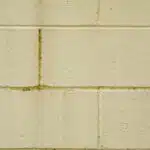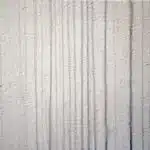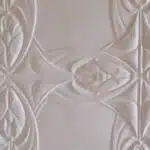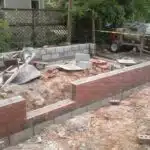Retaining walls are an essential element of landscaping design that provide both functional and aesthetic benefits. A well-built retaining wall can prevent soil erosion, stabilize slopes, and create additional usable space on a property. In this article, we will discuss how to build a solid wood retaining wall that will withstand the test of time while also enhancing the beauty and functionality of your landscape.
The key to building a successful retaining wall is in the planning and execution. Before beginning construction, it is important to consider factors such as the height of the wall, soil type, drainage needs, and local regulations. Choosing the right materials and techniques for construction is also crucial for ensuring long-term durability and stability. By following these guidelines and taking a thoughtful approach to design and construction, you can create a beautiful and effective wood retaining wall that serves both practical and aesthetic purposes for years to come.
Understanding The Basics Of Retaining Walls
Retaining walls are vital in landscape design, as they provide support to soil and prevent erosion. Retaining wall design involves considering several factors, such as the type of soil, the height of the wall, and the slope of the terrain. The construction technique employed must also be appropriate for the particular site conditions.
There are two primary types of retaining walls: gravity and reinforced. Gravity walls rely on their weight to hold back soil, while reinforced walls have steel or concrete reinforcements. The material used in construction affects the durability and longevity of a retaining wall. Wood is a popular option for its aesthetic appeal, cost-effectiveness, and ease of installation.
Retaining wall construction techniques vary depending on factors such as soil type, wall height, and drainage requirements. Some commonly used techniques include gabion baskets, geotextile fabric with gravel or stone fill, poured concrete walls with reinforcement bars for added strength. Proper planning ensures that your wood retaining wall will be structurally sound and long-lasting.
Planning Your Wood Retaining Wall
Design considerations are crucial in building a wood retaining wall that is both functional and aesthetically pleasing. One of the first things to consider is the height of the wall, which will determine the type of support needed for stability. The slope of the ground should also be taken into account since it can affect drainage and soil erosion.
Cost estimation is another important aspect to consider when planning your wood retaining wall. The cost will depend on factors such as the size, height, and materials used for construction. It’s essential to set a budget before starting any project to avoid overspending or sacrificing quality for affordability.
To ensure success, it’s recommended that you consult with a professional landscape architect who can provide guidance on design considerations and cost estimation. They can also help with obtaining necessary permits and ensuring compliance with local building codes. By taking these steps, you can have peace of mind knowing that your wood retaining wall will be built safely and effectively.
As you move forward in planning your wood retaining wall project, an important next step is choosing the right materials. With careful consideration of factors such as durability, aesthetic appeal, and cost-effectiveness, you can select materials that best suit your needs and preferences.
Choosing The Right Materials
1.When building a retaining wall out of wood, the choice of material is usually determined by the desired level of durability, cost, and aesthetic. 2.The most common types of wood used in outdoor retaining walls are pressure-treated lumber, cedar, and redwood, each of which have different levels of durability and cost. 3.When constructing a retaining wall, it is important to choose the appropriate type of fasteners, such as galvanized or stainless steel screws or nails, to ensure that the wall is secure and can withstand the elements. 4.It is also important to use weatherproofing materials, such as sealants and weather-resistant paints, to ensure the longevity of the wood and to protect it from the elements. 5.Additionally, a pressure-treated wood base can be used to increase the wall’s durability and prevent moisture damage. 6.Finally, a waterproof membrane should be used to protect the wood from water and moisture damage.
Types Of Wood
When it comes to building a solid wood retaining wall, choosing the right materials can make all the difference in its longevity and durability. One of the most crucial aspects to consider is the type of wood used. Among the most popular options are pressure-treated pine, cedar, and redwood.
Pressure-treated pine is an affordable option that has been chemically treated to resist rot, decay, and insects. This type of wood is known for its strength and durability, making it ideal for outdoor use. Cedar, on the other hand, has natural oils that protect it from decay and insect damage. It also boasts unique wood grain patterns that add character to any landscape design. Redwood is another great choice due to its resistance to rotting and decay as well as its aesthetic appeal.
It’s important to note that regardless of which type of wood you choose for your retaining wall project, treating it for outdoor use is imperative. This involves applying a sealant or stain that protects against moisture penetration and UV rays while preserving the natural beauty of the wood grain patterns. With proper treatment and care, a solid wood retaining wall can last for many years to come while enhancing the overall beauty and functionality of your outdoor space.
Fasteners
Choosing the right materials is essential in building a solid wood retaining wall, but it’s not just the type of wood that matters. The fasteners used to secure the boards together are just as crucial for the wall’s longevity and durability. Different types of fasteners include nails, screws, bolts, and spikes, each with its own advantages and disadvantages.
Nails are commonly used due to their affordability and ease of installation. However, they tend to loosen over time and can cause the boards to shift or split. On the other hand, screws offer better holding power and are less likely to work loose. Bolts provide even greater strength and stability but require pre-drilled holes for installation. Spikes are heavy-duty fasteners that can withstand significant pressure but should only be used on thicker boards.
Proper fastener installation techniques play a vital role in ensuring that the retaining wall stays securely in place over time. This includes using corrosion-resistant nails or screws that won’t rust or corrode under exposure to weather elements. It also involves spacing out the fasteners evenly along each board and attaching them at an angle for added stability. By selecting the appropriate fastener type and following proper installation techniques, you can ensure that your wood retaining wall will stand strong for years to come while serving its intended purpose of protecting your landscape design from erosion or collapse.
Weatherproofing
When it comes to building a wood retaining wall, choosing the right materials is crucial. But it’s not just about selecting the appropriate type of wood or fasteners; weatherproofing techniques are also essential in ensuring that the wall stands strong against exposure to the elements. Waterproofing and sealing methods can help protect the wood from moisture, which can cause rotting or warping over time.
There are several waterproofing techniques and sealing methods that you can use to protect your wood retaining wall. One option is to apply a sealant or stain that contains water repellents, which will help prevent water from penetrating the surface of the wood. Another option is to install a waterproof membrane behind the wall, which will create a barrier between the soil and the wood. You can also use pressure-treated lumber, which has been chemically treated to resist decay and insect damage.
By incorporating proper weatherproofing techniques into your wood retaining wall design, you can extend its lifespan while maintaining its structural integrity. This will save you time and money in maintenance costs down the line while serving its intended purpose of protecting your landscape design from erosion or collapse. Remember, a well-built and properly maintained retaining wall not only adds beauty to your outdoor space but also provides safety and stability for years to come.
Tools And Equipment Needed For Construction
Imagine standing on a barren plot of land, holding nothing but your imagination and the tools in your hand. You have a vision of creating something that will last for years to come, a solid wood retaining wall that will stand the test of time. To bring this vision to life, you need to have the right tools and equipment.
The first essential item you will need is power tools. A circular saw, drill driver, and impact driver are some of the most important power tools for building a solid wood retaining wall. These tools will help you make precise cuts and drill holes with ease, saving you time and effort. It is important to invest in high-quality power tools that are durable and reliable.
Along with power tools, you also need safety gear to protect yourself from potential hazards. Safety glasses, gloves, ear protection, and dust masks are all essential items when working with power tools. You should never compromise on safety when using any type of tool or equipment. Your safety gear not only protects you from harm but also helps ensure that your work meets professional standards.
As a landscape architect, it is crucial to have access to the right equipment and tools needed for construction projects such as building a solid wood retaining wall. Power tools such as a circular saw and drill driver are essential items that can help save time and increase efficiency. However, it is equally important to use proper safety gear such as gloves, ear protection, dust masks, etc., while working with these power tools to avoid any potential hazards or accidents during construction.
Safety Precautions
Prioritizing safety when building a retaining wall is crucial. As a landscape architect, I understand the importance of taking precautions during the construction process. Safety gear should be worn at all times, including hard hats, eye protection, and gloves. These items will protect workers from potential injuries such as head trauma, eye damage or cuts from sharp tools.
Another important aspect to consider is the excavation process. Before starting construction on your retaining wall, it’s essential to have a clear understanding of the soil conditions and any potential hazards that may exist underground. Excavating without proper knowledge can lead to dangerous situations such as cave-ins or unstable ground.
To ensure safe excavation procedures, careful planning and execution are necessary. It is recommended that you hire an experienced contractor to help with this phase of the project. They can evaluate site conditions, determine the appropriate excavation method and provide guidance on how to safely remove soil from the area.
- Always prioritize the safety of yourself and others around you when working on your retaining wall.
- Proper safety gear should be worn at all times.
- Consider hiring an experienced contractor for excavation work.
With these safety precautions in mind, we can move onto preparing the site for our retaining wall construction. This next phase lays out critical steps that need to be taken before building begins. By following these guidelines carefully, we can ensure a successful and safe construction process that meets all required codes and standards.
Preparing The Site
Site preparation is critical in building a solid wood retaining wall. The first step in the site preparation process is to identify the location where the retaining wall will be built. This should be done by examining the slope of the ground and determining where water flows during rainfall. Once the location has been identified, measurements should be taken to determine the size and height of the wall required.
Excavation techniques are also important in preparing the site for a wood retaining wall. The area where the wall will be constructed must first be cleared of any debris, such as rocks or roots, that could interfere with construction. A trench must then be dug along the length of the proposed retaining wall. This trench should have a depth equal to one-third of the height of the finished wall and should extend at least 6 inches beyond each end of where the wall will stand.
Proper site preparation and excavation techniques are essential for ensuring that a wood retaining wall is sturdy and reliable. By taking careful measurements and clearing debris from the area, builders can create a solid foundation for their project. In our next section, we will discuss how to build a foundation for your retaining wall without compromising on its structural integrity.
Building A Foundation
As a landscape architect, creating a solid foundation is crucial when building a retaining wall. The first step in building a foundation is determining the excavation depth. It is important to excavate down to a level where the soil is firm and undisturbed. This will provide stability for the retaining wall and prevent any future issues.
Once the excavation depth has been determined, the next step is to implement drainage solutions. Poor drainage can cause issues such as erosion, water damage, and instability of the retaining wall. To prevent these problems, it is essential to install proper drainage systems such as perforated pipes or gravel-filled trenches that allow water to flow away from the wall.
Incorporating proper excavation depth and drainage solutions in the foundation of a retaining wall provides a stable base for framing the wall above ground level. By ensuring that these foundational components are properly implemented, you are setting yourself up for success in creating a long-lasting and effective structure. In framing the wall, attention must be given to choosing appropriate materials and techniques that will further enhance its durability and strength.
Framing The Wall
1.When constructing a solid wood retaining wall, it is important to first gather the necessary materials, such as lumber, nails, screws, and concrete. 2.The landscape architect should then plan the layout for the wall, including its length, height, and design. 3.In order to ensure structural stability, the landscape architect should also consider the grade and soil conditions of the area. 4.Finally, the landscape architect should ensure that the wall is properly anchored to the ground to prevent it from toppling over.
Gathering Materials
Sourcing materials is a crucial part of building a solid wood retaining wall. The type of wood used for the framing will determine the strength and durability of the wall. It is recommended to use pressure-treated lumber, which has been chemically treated to resist rot and decay. This type of wood is readily available at most home improvement stores and lumberyards.
Cost analysis should also be considered when sourcing materials. Pressure-treated lumber may be more expensive than other types of wood, but it will save money in the long run by lasting longer and requiring less maintenance. Additionally, using high-quality screws or nails to secure the wood will ensure that the wall stays sturdy over time. It is important to factor in all costs when planning for materials to avoid unexpected expenses during construction.
In conclusion, sourcing materials for framing a solid wood retaining wall requires careful consideration and planning. Pressure-treated lumber is recommended for its resistance to rot and decay, while cost analysis should be taken into account when selecting materials. Using high-quality fasteners will also contribute to the longevity of the wall. By ensuring that quality materials are used in construction, landscape architects can create beautiful and durable retaining walls that serve their clients’ needs for years to come.
Planning Layout
Once the materials for framing a solid wood retaining wall have been sourced, the next step is to plan the layout. Landscape architects must consider various factors such as the slope of the terrain, soil composition, and drainage patterns. Accurate measurements must also be taken to ensure that the wall is level and properly aligned.
One important aspect of planning the layout is measuring angles. The angle of the slope will determine how deep and wide the wall needs to be constructed to provide adequate support. This measurement must be precise to avoid any structural issues in the future. In addition, landscape architects should also consider incorporating curves or steps into the design to create a visually appealing and functional retaining wall.
Another crucial factor in planning layout is soil composition. It is important to understand how different soils will react over time and adjust construction methods accordingly. For example, if the soil is prone to erosion or shifting, additional reinforcement may need to be added during construction. Proper drainage should also be considered when planning the layout to prevent water from accumulating behind the wall.
By carefully considering these factors during the planning process, landscape architects can create a well-designed and structurally sound retaining wall. Measuring angles accurately and understanding soil composition are just two examples of critical components in this process. By serving their clients’ needs with a beautiful and durable retaining wall, landscape architects can provide long-lasting value for years to come.
Installing Drainage Systems
After framing the wall, the next crucial step is to install a drainage system to prevent water buildup behind the retaining wall. This is essential in ensuring that the soil remains stable and does not erode over time. Without proper drainage, water pressure can build up and cause damage to the wall, leading to costly repairs and even collapse.
The first step in installing drainage is to excavate a trench at the base of the retaining wall. This trench should be deep enough to accommodate a perforated drainpipe that will collect any water that seeps through the soil. The drainpipe should be surrounded by gravel or crushed stone, which allows water to flow freely while also filtering out debris that could clog the pipe.
Soil stabilization is another critical aspect of building a solid wood retaining wall. This involves compacting and reinforcing the soil behind the wall to prevent it from shifting or settling over time. A common method of soil stabilization is using geogrids, which are synthetic materials that interlock with each other and create a stable layer of soil. When properly installed, geogrids can significantly increase the strength and stability of a retaining wall.
Transition: Now that we have established proper drainage installation and soil stabilization techniques for our wood retaining wall, let us move on to cutting and installing wood boards for added support and structural integrity.
Cutting And Installing Wood Boards
To create a solid wood retaining wall, the cutting and installation of wood boards is a critical step. Properly cut and placed boards will ensure the stability and longevity of the wall. Before cutting the boards, it’s important to measure and mark them accurately to avoid mistakes. Cutting techniques such as a circular saw or handsaw can be used, but it’s crucial to make clean cuts that are straight and even.
Once the boards are cut, they should be installed with careful consideration for placement. The first row of boards should be dug into the ground slightly to provide a stable foundation. Boards should then be stacked vertically and secured together with nails or screws. It’s essential to ensure that each board is level before continuing with the next row to prevent any unevenness in the wall structure.
Board placement tips include staggering the seams between each row of boards for added strength and using shorter lengths for curved walls. Additionally, it’s crucial to consider drainage when placing each board to allow water to flow freely through the wall rather than accumulating behind it.
As we move on from cutting and installing wood boards, securing the wall with anchors is our next step towards building a sturdy retaining wall. Anchors provide additional support by anchoring the wall into the soil behind it. By following these guidelines for cutting and installing wood boards, we can ensure that our retaining wall will stand strong for years to come.
Securing The Wall With Anchors
Types of anchors are an important consideration when securing a wood retaining wall. There are various types of anchors available in the market, each with its own advantages and disadvantages. Some common anchor types include helical anchors, concrete anchors, and deadman anchors. Helical anchors are best suited for softer soils, while concrete anchors are more suitable for harder soils. Deadman anchors, on the other hand, require a trench to be dug behind the retaining wall and can provide additional support.
Proper anchor placement is crucial in ensuring that the retaining wall remains structurally sound over time. The depth and spacing of the anchors must be carefully considered based on the height and weight of the wall as well as the soil conditions. For example, deeper anchors may be required in areas with softer soils or where there is a higher risk of erosion. Similarly, closer spacing may be necessary for taller walls or those that will experience significant lateral pressure.
By selecting appropriate anchor types and placing them correctly, you can ensure that your wood retaining wall is secured safely and effectively. Properly anchored walls can withstand years of use without shifting or collapsing, providing peace of mind for both homeowners and professionals alike. In the subsequent section, we will discuss some finishing touches that can help enhance the beauty and functionality of your retaining wall.
Adding Finishing Touches
- Staining the wood is an optional decorative touch that can enhance the color of the wood retaining wall.
- Sealing the wood is strongly recommended in order to protect it from the elements and preserve its longevity.
- Decorative accents can be added to the wood retaining wall to add visual interest and customize it to the surrounding landscaping.
- Staining the wood should be done with a high-quality wood stain for the best results.
- Sealing the wood should be done with a sealant that is specifically designed for outdoor use.
- Decorative accents can be made of various materials such as stone, metal and ceramic to create a unique aesthetic.
Staining The Wood
To elevate the aesthetic value of a solid wood retaining wall, staining the wood is an excellent way to achieve a polished look. Wood staining techniques can enhance the texture and natural grain of the wood while providing protection against harsh weather elements. As a landscape architect, it is crucial to educate clients about the importance of selecting the right stain color that will complement their overall outdoor design scheme.
Choosing the right stain color for a solid wood retaining wall requires careful consideration of several factors such as lighting, surrounding flora, and hardscape materials. Lighter shades like natural cedar or honey oak add warmth and brightness to outdoor spaces, while darker hues like mahogany or espresso create depth and contrast. As an expert in landscaping, it’s important to guide clients towards selecting a stain that will not only match their personal style but also harmonize with their property’s surroundings.
There are various wood staining techniques available depending on the desired finish and level of protection required. From water-based stains that dry quickly to oil-based stains that penetrate deeper into the wood fibers for long-lasting results, each technique has its own advantages. By offering professional advice on different options available, landscape architects can help clients make informed decisions about which technique would be best suited for their specific needs.
Sealing The Wood
As landscape architects, it is our responsibility to ensure that every aspect of a project is well thought out and executed. Adding finishing touches such as sealing the wood for solid wood retaining walls is crucial in maintaining its longevity and overall aesthetic appeal. Sealing the wood protects it from harsh weather elements such as rain, snow, and UV rays that can cause rotting, warping, or discoloration over time.
There are various waterproofing materials available in the market today that are cost-effective options for sealing solid wood retaining walls. Sealants such as polyurethane and acrylic provide a clear coat that enhances the natural beauty of the wood while protecting it from moisture damage. Epoxy sealants offer an even more durable finish, making them ideal for high-traffic areas or locations prone to water exposure.
When recommending sealing options to clients, it’s important to consider their specific needs and budget constraints. As experts in our field, we should be able to provide professional advice on which waterproofing material would be best suited for their particular project. By doing so, we can help them make informed decisions that will not only add value to their property but also protect their investment in the long run.
Adding Decorative Accents
As landscape architects, we understand that the finishing touches are what truly make a project come to life. While sealing wood for solid wood retaining walls is crucial for its protection and longevity, adding decorative accents can elevate the overall aesthetic appeal of the space. Wooden accents and decorative elements can enhance the natural beauty of the wood while providing a unique touch to the design.
There are various ways to incorporate wooden accents into a project, such as using wood panels for fencing or creating custom-built furniture pieces. Decorative elements such as outdoor lighting fixtures or sculptures can also add interest and texture to the space. When choosing these elements, it’s important to consider their durability and ability to withstand harsh weather conditions.
By incorporating wooden accents and decorative elements into our designs, we not only enhance their visual appeal but also create a more personalized experience for our clients. These finishes add an extra layer of detail that can make all the difference in how a space is perceived. As landscape architects, it is our responsibility to ensure that every aspect of our designs is well thought out and executed with precision, including adding these finishing touches that bring our projects to life.
Maintaining Your Wood Retaining Wall
As we near the end of our guide on how to build a solid wood retaining wall, we cannot stress enough the importance of adding finishing touches to your project. These final touches will not only enhance the aesthetic value of your retaining wall but also improve its durability and lifespan. One important aspect that should not be overlooked is staining options. Staining your wood retaining wall can protect it from harsh weather conditions, prevent insect infestation, and increase its resistance to decay.
When considering staining options for your wood retaining wall, there are various products available on the market that can cater to your specific needs. Some stains come with waterproofing properties while others are formulated for UV protection. It is important to select a stain that is compatible with your type of wood and its natural color. If you want to add a pop of color or mimic the look of different types of wood, some stains also offer tinting options.
Despite taking all necessary precautions during construction, damages may still occur over time due to natural wear and tear or external factors such as extreme weather conditions. Therefore, it is important to know how to repair damages when they occur. Small damages such as scratches or dents can be sanded out and filled with putty before staining; larger damages may require replacing a section or two of the retaining wall altogether.
In order to ensure the longevity and efficiency of your wood retaining wall, proper maintenance is crucial. However, even with regular upkeep, common problems may arise such as soil erosion or shifting due to improper drainage systems or incorrect installation methods. In our next section, we will discuss troubleshooting common problems encountered in maintaining a wood retaining wall and how best to rectify them for optimal performance.
Troubleshooting Common Problems
Common problems can arise when building a solid wood retaining wall. One of the most common issues is cracking due to shifting ground or pressure from soil and water behind the wall. This can be addressed by installing drainage systems and using rebar or other reinforcement methods during construction. Another issue that may arise is rotting, which occurs when the wood comes into contact with moisture for extended periods. To prevent this, it is essential to use pressure-treated lumber, apply sealant regularly, and ensure proper drainage.
If your wooden retaining wall experiences cracking or rotting, there are several DIY repairs you can undertake to address these issues. For example, if you notice small cracks in your wall, filling them with epoxy or caulk can help prevent further damage. If the damage is more severe, replacing individual boards or sections of the wall may be necessary. In cases where rot is present, removing damaged wood and replacing it with new pressure-treated lumber is crucial.
Overall, while building a solid wood retaining wall offers many advantages, it also comes with its set of challenges that require careful consideration during construction and maintenance. By addressing common problems proactively and taking preventive measures such as regular inspections and repairs, you can ensure that your retaining wall remains sturdy and attractive for years to come.
Transition: Now that we have explored common solutions for troubleshooting issues with wooden retaining walls let’s take a look at how they can enhance your landscape design.
Enhancing Your Landscape Design With A Wood Retaining Wall
When it comes to enhancing the aesthetic appeal of your landscape design, a wood retaining wall is an excellent addition. Not only does it provide structural support, but also adds warmth and character to your outdoor space. As the saying goes, “the devil is in the details,” and this couldn’t be truer when it comes to creating a unique look for your wood retaining wall.
To achieve a one-of-a-kind appearance, consider using wood stains. Stains offer a range of color options that can complement or contrast with other elements in your landscape design. From natural wood tones to bold hues, stains allow you to customize your retaining wall’s appearance to suit your personal style.
Incorporating plants into your wood retaining wall design is another way to elevate its aesthetics. By planting greenery within and around the structure, you can soften its impact and create a harmonious relationship between the hardscape and softscape elements of your landscape. Additionally, plants can help with erosion control and improve air quality, making them both beautiful and functional components of your outdoor space.
By utilizing wood stains and incorporating plants into your wood retaining wall design, you can create an eye-catching feature that enhances the overall beauty of your landscape design. Careful consideration of these details will ensure that not only is your outdoor space structurally sound but also aesthetically pleasing for years to come.
Conclusion
In conclusion, building a solid wood retaining wall requires careful planning, proper materials and equipment, and adherence to safety precautions. Let us think of the retaining wall as the backbone of a garden; it provides structure and support to the surrounding landscape. Like a well-designed spine, a well-constructed retaining wall will create harmony between the different elements of your garden.
However, just like any other structure in your garden, it requires maintenance to ensure its longevity. Regular inspections and repairs will prevent common problems such as erosion or rotting. A wood retaining wall can enhance your landscape design by adding texture and warmth. It creates an opportunity for you to showcase creativity by incorporating various finishes such as paint or stains that complement the overall aesthetic of your garden. In summary, building a wood retaining wall is not only practical but also an opportunity to add beauty and elegance to your outdoor space.
Image Credits
- “Lichen Macro” by Johan J.Ingles-Le Nobel (featured)

























![How To Repair Rotted Wood 25 Texture : Altario Buick Estate Wagon : Rotting Faux Wood Paneling [1 of 2]](https://green-life.blog/wp-content/uploads/2023/05/z1CersK-gCjq-150x150.jpg.webp)



